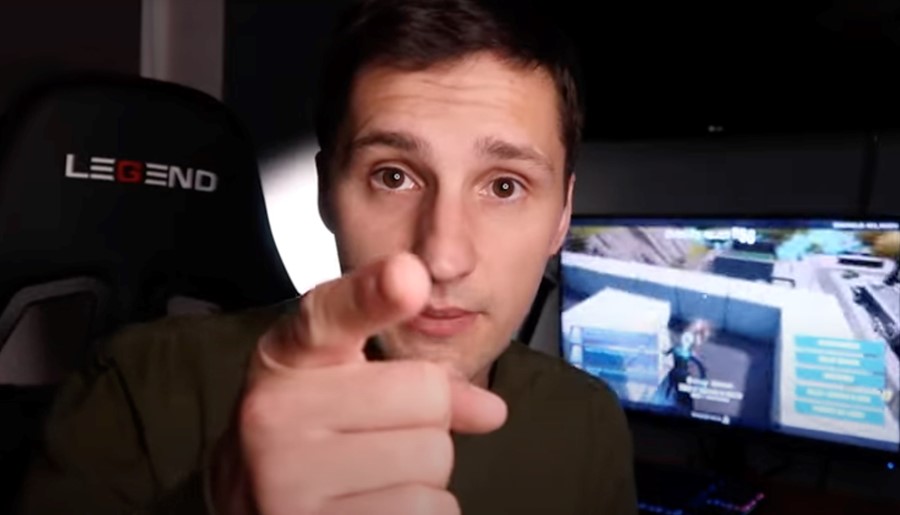Softly-spoken domestic violence videos are the disturbing new trend growing in popularity on YouTube – but what’s the appeal?
“You’re sucking the energy out of me,” whispers your boyfriend as he solemnly swivels on his gaming chair. Over his shoulder, a flatscreen TV illuminates the room with images of his Fortnite character skydiving above a pixelated, turquoise ocean. “The second I see you I’m like, instantly raging.”
Through the course of his 15-minute hushed lecture, he berates you for not washing yourself enough, being unable to hold a job, and – crucially – for daring to distract him from the video game stuck on a technicolour loop behind him.
This isn’t the scene from a repressed teenage memory, or even a high school PSA on spotting the signs of an unhealthy relationship. It’s actually one of the thousands of ‘abusive boyfriend’ ASMR videos that have cropped up across the internet over the past year. A far cry from ASMR’s origins as tingly, relaxing content, creators conjure traumatic scenarios that vary from a partner furiously searching your phone, scolding you for coming home late or even apologising after ‘accidentally’ hitting you during an argument. Each video is characterised by a male voice that degrades, shames and insults the viewer, while careful not to exceed a discreet decibel limit.
When ASMR first exploded in popularity, the leading videos consisted of tiny shards of soap falling on plastic tables, fluorescent slime being prodded by manicured fingers, or exaggerated chewing and slurping against hyper-sensitive microphones. Shortly after came the rise of roleplay ASMR, with niche, real-world scenarios recreated in hushed tones. Maybe you sat in the wrong seat on the plane and now the air hostess must chastise you in a sharp whisper, or your plastic surgeon has decided to guide you through the dangers of breast augmentation at a volume only dogs can decipher. Though perhaps outwardly strange to the least internet-savvy, it was a low-stakes online subculture that didn’t ever stray too far from its goal of relaxation.
Yet, somehow, abuse ASMR has found a way to thrive within this realm of calming content – despite the implied violence embedded into the scripts. 17-year-old Markell Young started making ASMR audios only two months ago and has already amassed over 250,000 views, with 98 per cent of his burgeoning audience comprised of women – 57 per cent of those aged between 18-23. Many of his viewers, he says, have previously been victims of abuse. “A lot of girls have said they’ve never got an apology after being verbally abused and that the audio makes them break down and cry,” he explains. “I don’t think an audio normalises [abuse], but more just helps women to relieve trauma.”
Falling into this target demographic is 18-year-old Ella*, who discovered the videos on Reddit and now listens to them every night to fall asleep. “I just feel fluffy and safe,” she says. “I think most people who listen to this want to be abused in a fantasy setting.” She’s one of many viewers who also credit the videos for providing a sense of “control” – something she didn’t have in a prior abusive relationship. You can’t silence an aggressive partner, but you can close the browser tab playing an ASMR video and, for some creators, this is something to capitalise on. “The reaction [to the videos] is either shock or excitement because the abusive boyfriend apologises after,” Young explains. “But sometimes I make an audio where the boyfriend doesn’t apologise and some people in the comments are a little upset, while others are like ‘I deserve it yeah I am useless’.”
Though ‘abusive boyfriend’ ASMR may be a fairly novel internet trend, this romanticisation of abuse has long thrived on pockets of teen-dominated sites like Tumblr or Wattpad. Anyone chronically online enough in the 2010s may have been privy to the slew of One Direction fanfic that fantasised about being abused by the group, or positioned one of the members as a valiant hero who saves ‘y/n’ from a violent partner or parent. Scrolling further you’d see a bombardment of blogs dedicated to celebrating Chuck Bass’s controlling treatment of Blair Waldorf or heralding Edward Cullen as the ultimate over-protective boyfriend.
According to Maria Scaptura, a researcher in masculinity and violence and Assistant Professor at the University of Arkansas, this tendency for young people to romanticise abusive behaviour is simply (and unsurprisingly) the byproduct of a misogynistic society – one increasingly worsened by the rise of ‘men's rights’ influencers and digital pick-up artists. “Young women and girls are taught from a very early age that behaviours like these are potentially romantic,” she explains. “The combination of heteronormative expectations on women in which stalking and abuse are normalised, along with misogyny that tells women to be appreciative of male attention leads to the production of content that romanticises this behaviour. It’s the perfect storm.”
This is evident in the sentiment from a handful of commenters, who anonymously lament the scars left by previous experiences of emotional abuse, while keenly suggesting specific scenarios they’d like the creator to record. Under a video titled ‘Abusive boyfriend hits you and doesn’t regret it’, one comment says, “this is so wrong but I want this kind of relationship to feel alive”, while another reads “where can I find a guy like him?”. For the majority of the audience, the videos are often perceived less as disturbing examples of a controlling partner and more enigmatic characters who simply have an alluring obsession with the viewer.
Some creators, like Young, argue that the videos are beneficial in their ability to highlight specific examples of abusive behaviours for their, predominantly young and female, audiences to look out for. Scaptura, however, isn’t so sure. “There is no overt message in these videos from their creators demonstrating how this behaviour is bad or highlighting the prevalence of domestic abuse,” she points out.
And, with an increase in domestic violence in the UK, there’s a real risk of leading vulnerable viewers to dismiss or ignore signs of domestic abuse for the sake of hopping on a content creation bandwagon. “At the end of the day, these creators are going to keep producing content that benefits them – either through popularity, fame or profit,” Scaptura continues. “We need to acknowledge the persistence of violence against women and femicide. These [ASMRs] are just a symptom of the larger issues of misogyny and sexual violence in our society.”
The 24-hour national domestic abuse helpline can be reached on 0808 2000 247.
Join Dazed Club and be part of our world! You get exclusive access to events, parties, festivals and our editors, as well as a free subscription to Dazed for a year. Join for £5/month today.




